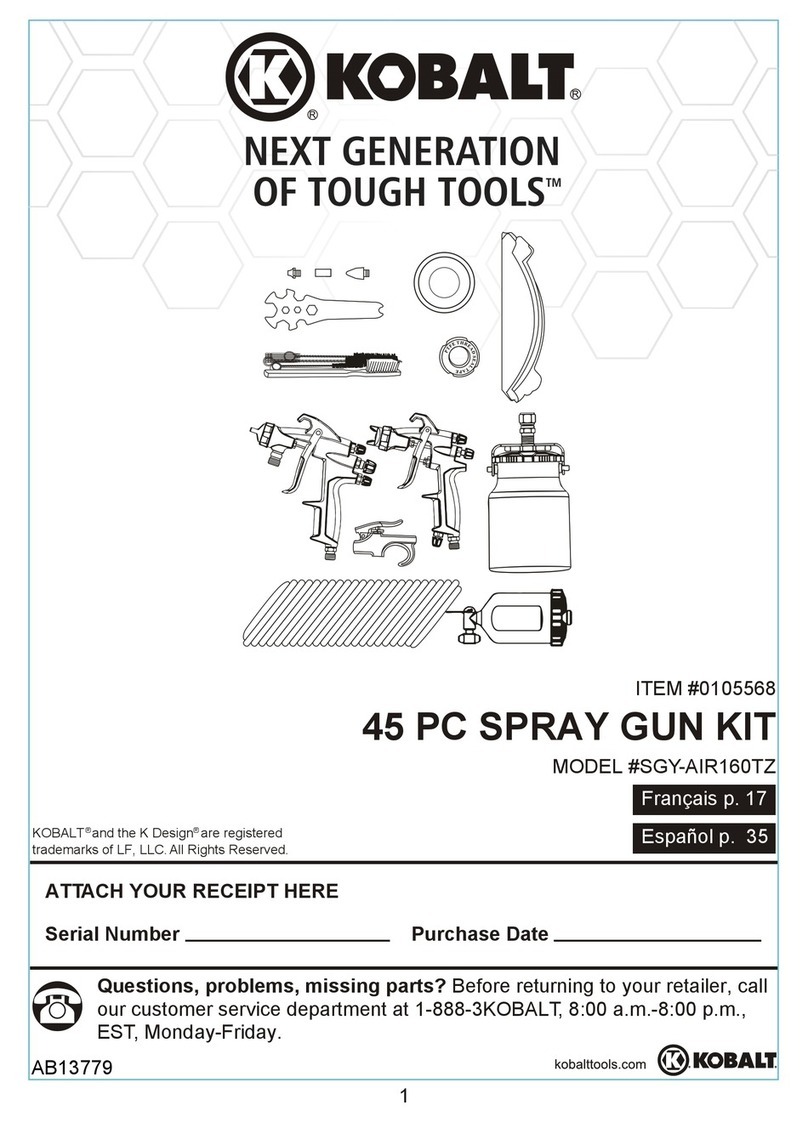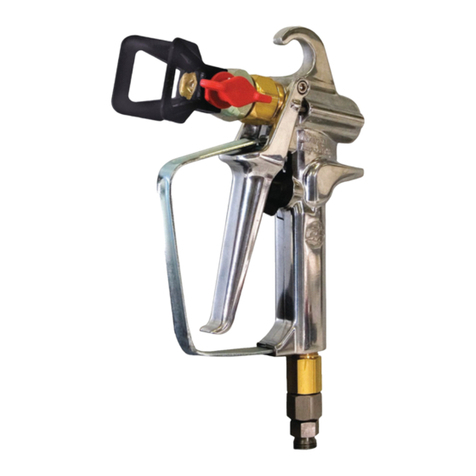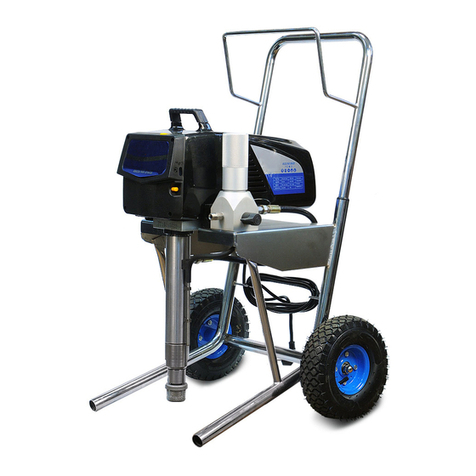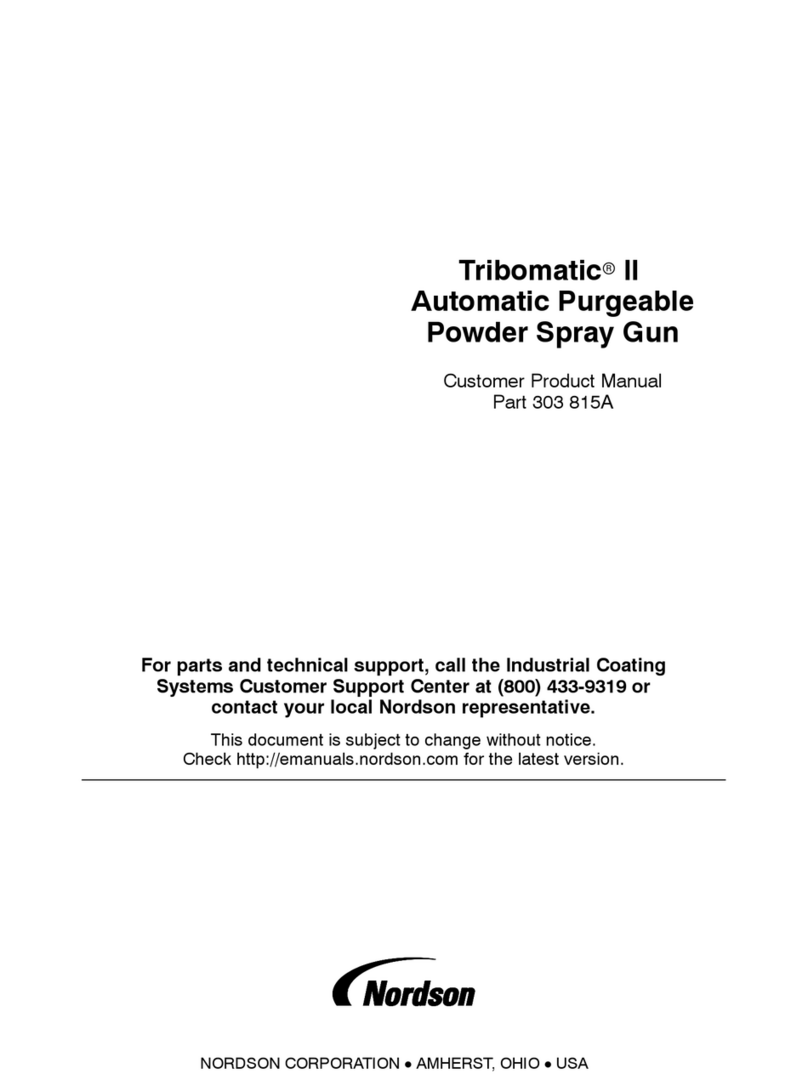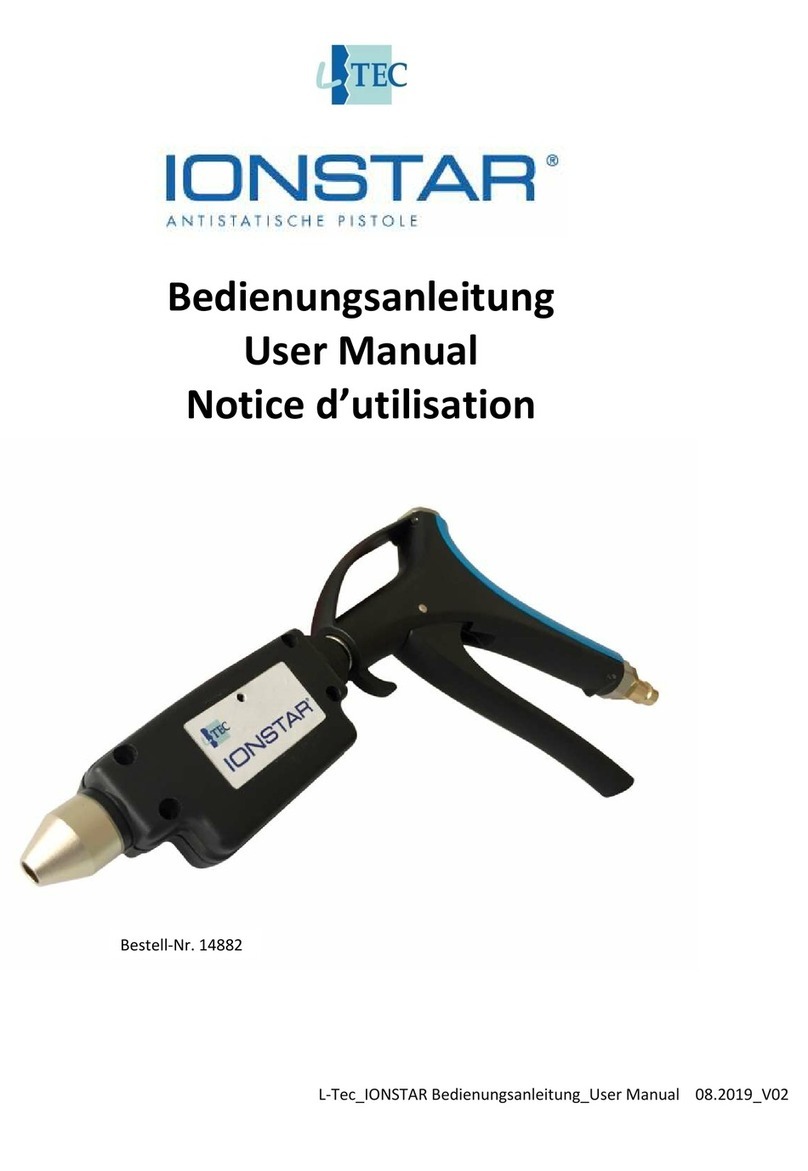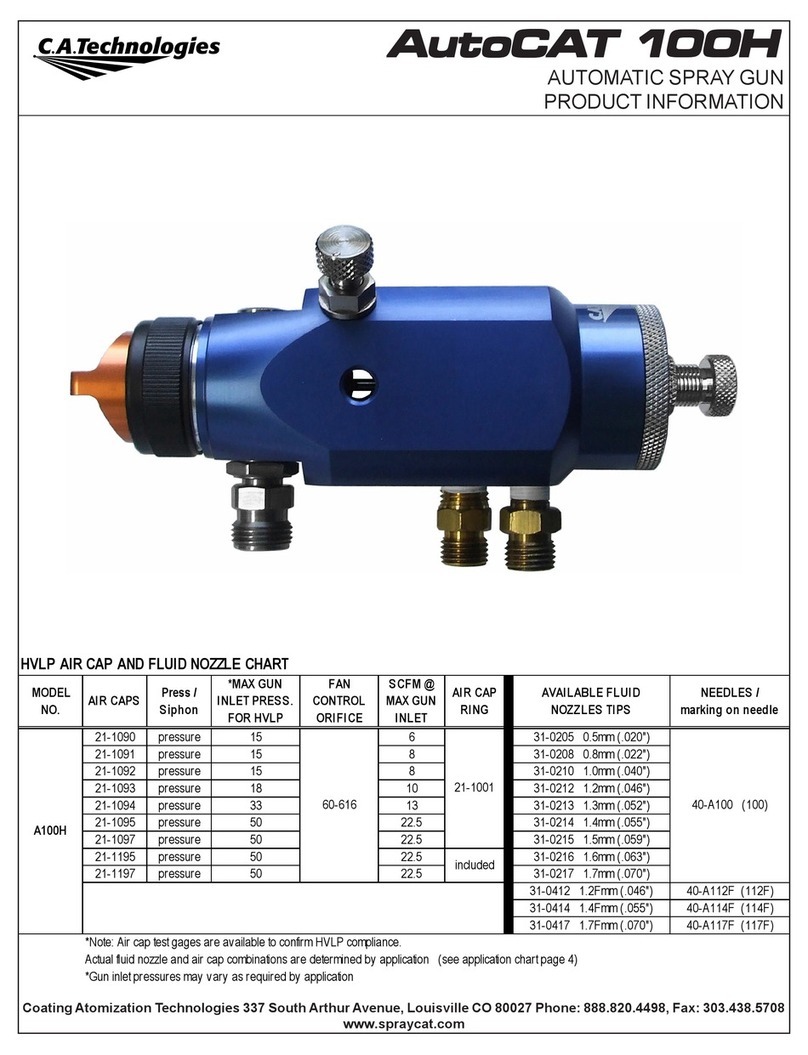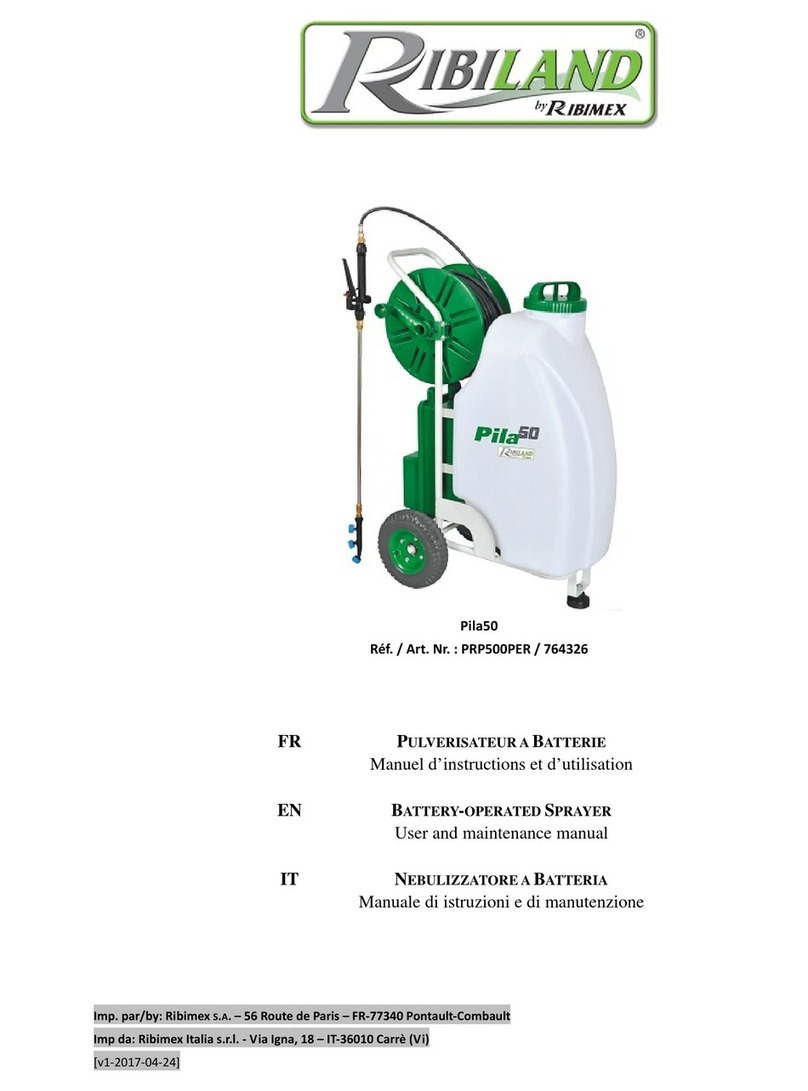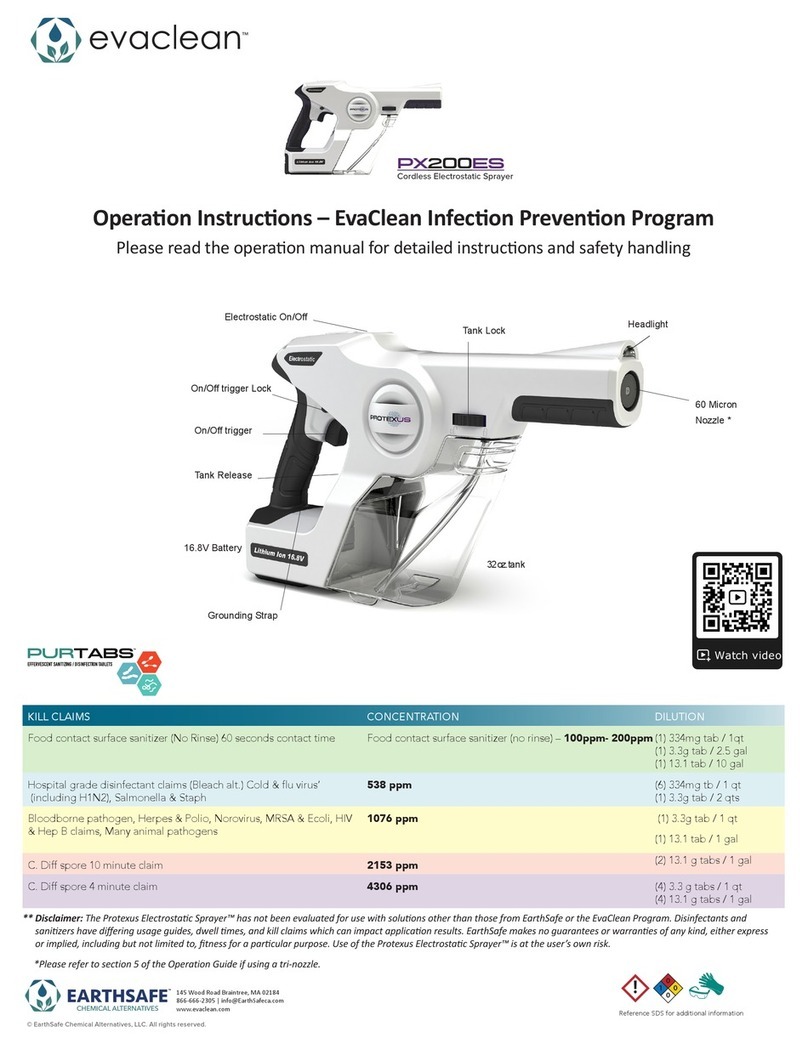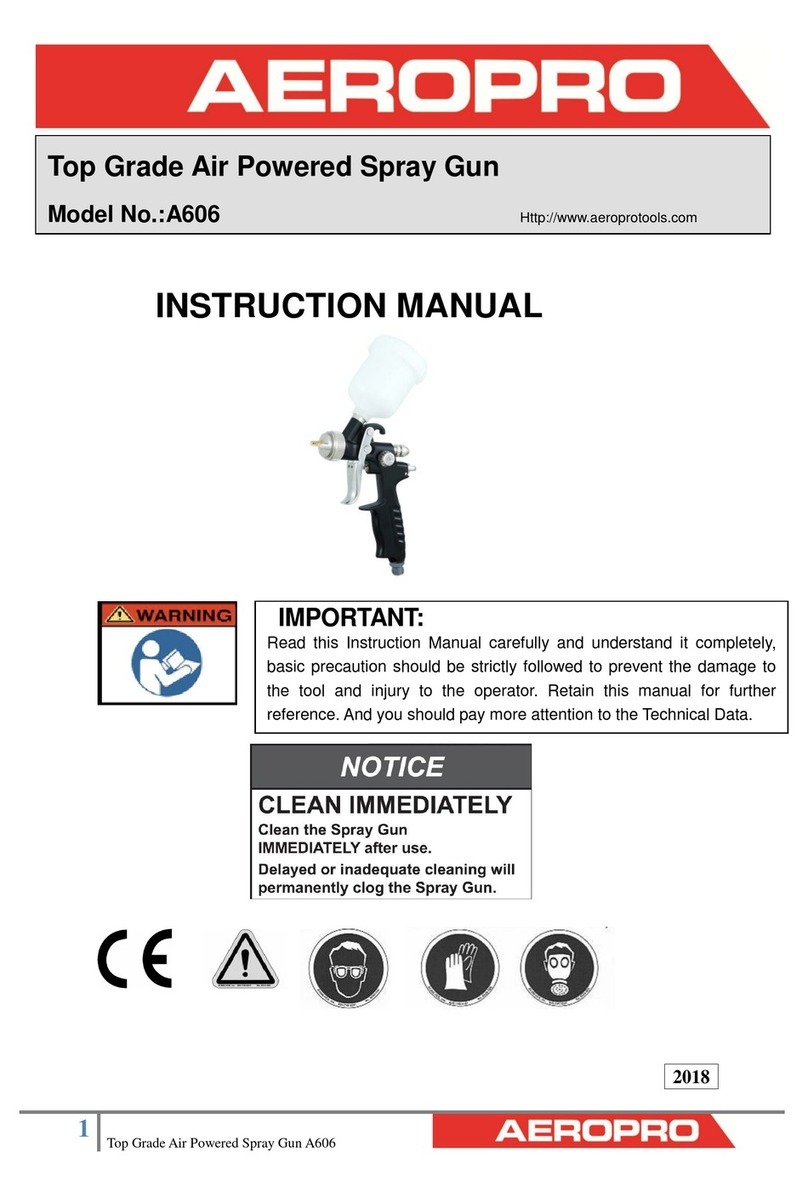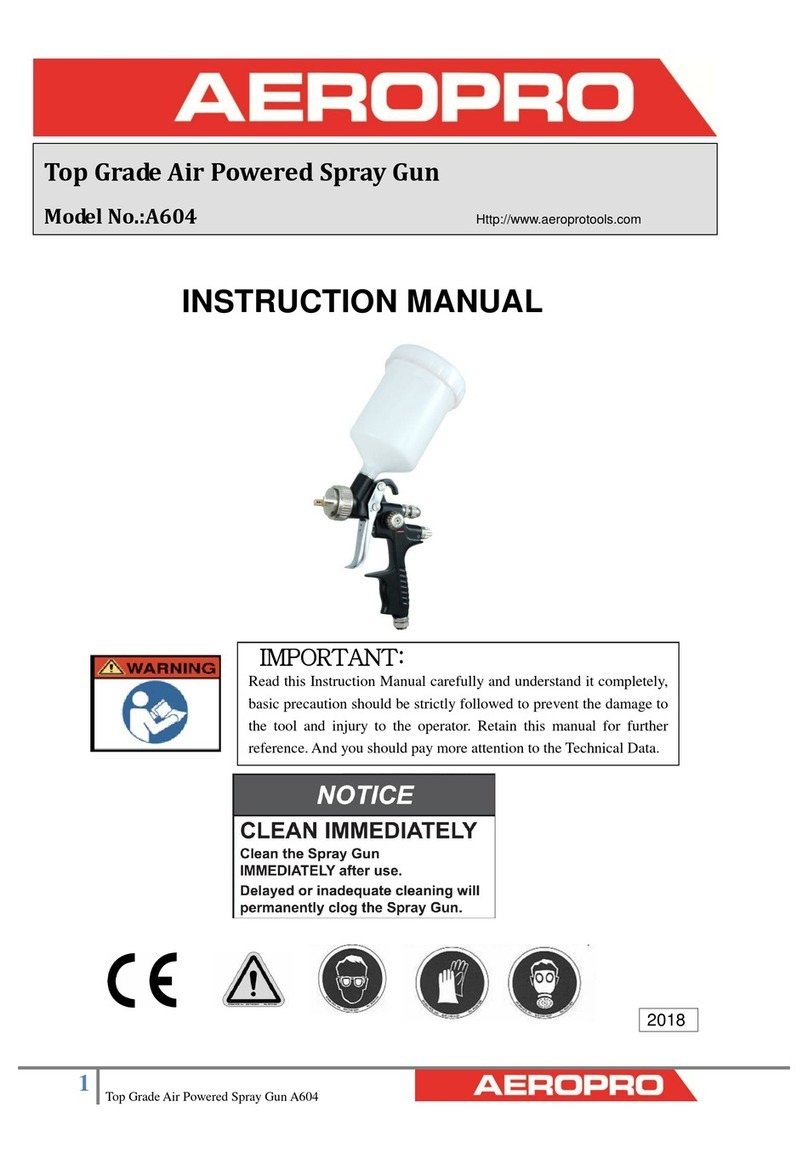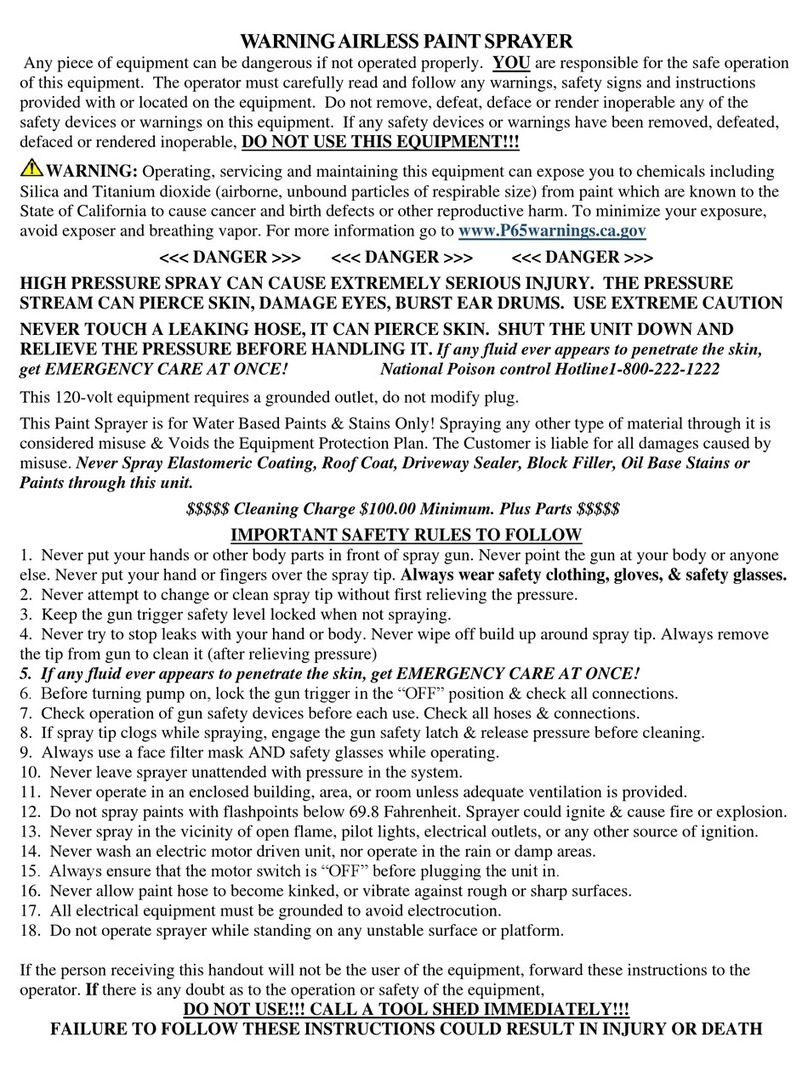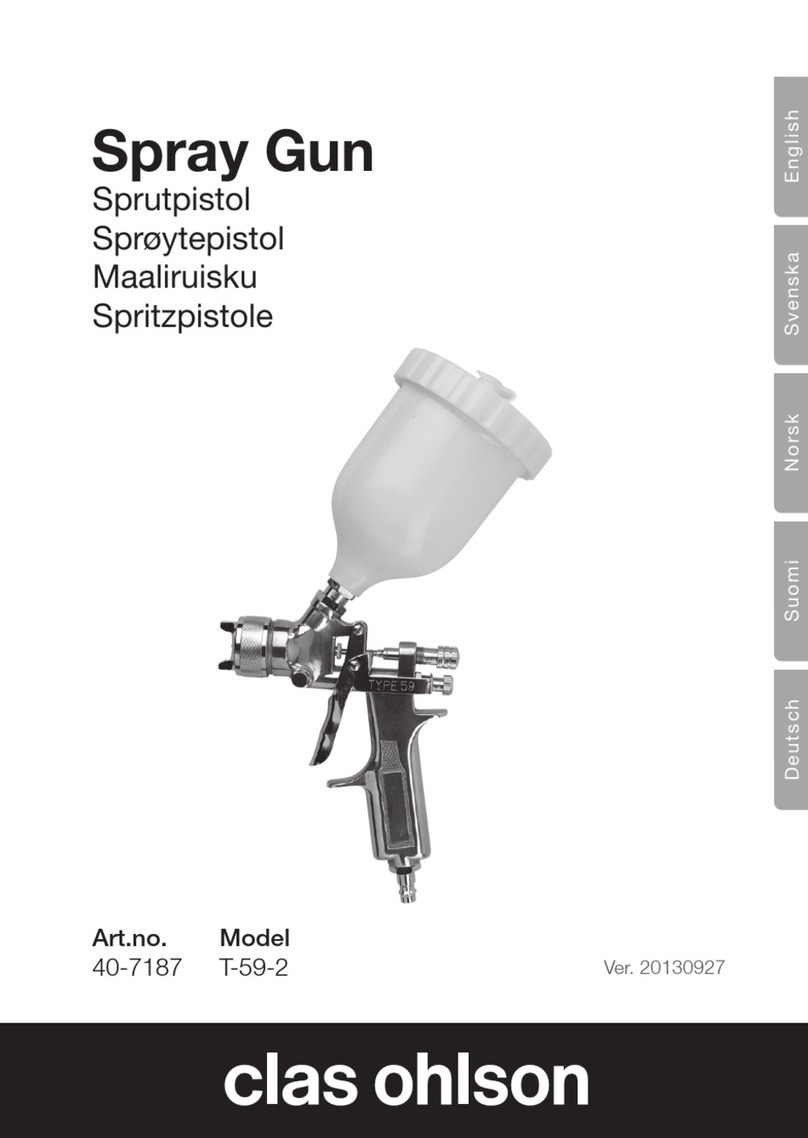
- 4 -
20.Do not use the tool in explosive condition or face to live parts.
21.Some hazards resulting from contact with and/or breathing of toxic, gases, dusts, mists, vapours etc. may
by created by operation of the equipment. Be reminded that the user to be aware of the recommendations of
the coating etc. manufacturer.
Instructions For Operation
Preparation
1. After unpacking the product, inspect carefully for any damage that may have occurred during transit. Make
sure to tighten fittings, bolts, etc., before putting unit into service.
2. Thoroughly mix and thin paint in accordance with the paint manufacturer’s instructions. Most materials will
spray readily if thinned properly.
3. Strain material through filter, cheese cloth or a paint strainer.
4. Fill the canister about ¾ full and start the air compressor.
WARNING DO NOT EXCEED Maximum Pressure of Spray Gun or any other parts in the compressor system.
5. After Connect the gun to air supply, please make sure that the fluid cap, container and air hose have been
connected tightly with spray gun.
6. Set up a piece of cardboard or other scrap material to use as a target and adjust for best spray pattern.
WARNING Never aim or spray at yourself or anybody else which would cause serious injury.
7. Test the consistency of the material by making a few strokes on a cardboard target. If material still appears
too thick, add a small amount of thinner. THIN WITH CARE! Do not exceed paint manufacturer’s thinning
recommendations.
Adjustment
The desired pattern and fine atomization can be easily obtained by regulating the Pattern Adjusting
Knob, Fluid (PAINT) Adjusting Knob.
PATTERN ADJUSTMENT: Turning Pattern Adjusting Knob to the right until tight will make spray pattern round,
or turning left make spray pattern ellipse.
Fluid (PAINT) ADJUSTMENT: Turn the Paint Adjusting Knob clockwise will decrease the volume of fluid
output and counter-clockwise will increase fluid output.
Pressure adjustment:Turn the knob 7 for adjusting the air inlet volume.
Operation
1. Begin spraying. Always keep the gun at right angles to the work .
2. Keep the nozzle about 6 to 12 inches from the work surface. Grip the gun keeping perpendicular with
spraying area then move it parallel for several times, Stopping gun movement in mid-stroke will cause a
build up of paint and result in runs. Do not fan the gun from side to side while painting. This will cause a
build-up of paint in the center of the stroke and an insufficient coating at each end.
3. Trigger the gun properly. Start the gun moving at the beginning of the stroke BEFORE SQUEEZING THE
TRIGGER and release the trigger BEFORE STOPPING GUN MOVEMENT at the end of the stroke. This
procedure will blend each stroke with the next without showing overlap or unevenness .
4. The amount of paint being applied can be varied by the speed of the stroke, distance from the surface and
adjustment of the fluid control knob.
5. Overlap strokes just enough to obtain an even coat.
NOTE: Two thin coats of paint will yield better results and have less chance of runs than one heavy layer.








